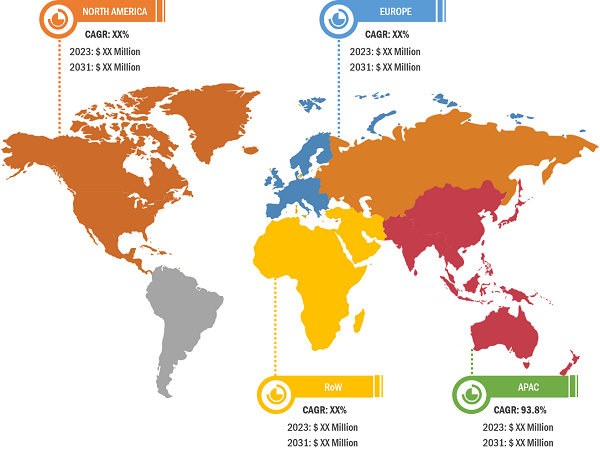Increase in Demand for High-Capacity Batteries to Extend EV Driving Range Boosts Immersion Cooling for EV Batteries Market Growth
According to our latest study titled “Immersion Cooling for EV Batteries Market Forecast to 2031 – Global and Regional Share, Trend, and Growth Opportunity Analysis – by Type, Cooling Fluid Type, and Vehicle Type,” the market was valued at US$ 2.1 million in 2023 and is projected to reach US$ 278.45 million by 2031; it is estimated to register a CAGR of 88.3% from 2026 to 2031. The report includes growth prospects in light of current immersion cooling for EV batteries market trends and factors influencing the market growth.
Immersion cooling for electric vehicle (EV) batteries has been a major part of ongoing research. It is yet to be witnessed on a commercial scale. It might offer a better approach to heat management and enable benefits ranging from extended battery life, faster charging, and safer operation to lighter batteries in EVs and hybrid vehicles. The EV battery generates tremendous heat during the charging and discharging. The heat generation rate increases from 20% to 80%, particularly while being charged. The performance of an EV’s battery is highly thermally coupled and thus is raising the need for more efficient thermal management systems, such as immersion cooling for EV batteries. Immersion cooling is a process where battery cells and components are cooled more effectively by submerging them in a dielectric coolant fluid. It also enables cells to be packaged more closely, increasing energy density while removing the extensive coolant channels and cold plates. In immersion-cooled batteries, the casing is designed to be leakproof with pressure relief features, thus preventing air or moisture from penetrating the cell and compromising the performance of the battery system.
Immersion Cooling for EV Batteries Market – by Region, 2023 and 2031
Immersion Cooling for EV Batteries Market Size and Forecast (2021 - 2031), Global and Regional Share, Trend, and Growth Opportunity Analysis Report Coverage: By Type (Single-Phase Immersion Cooling and Double-Phase Immersion Cooling), Cooling Fluid Type (Mineral Oil, Synthetic Oil, Fluorocarbon-Based Fluid, and Others), Vehicle Type (Passenger Vehicles, Light Commercial Vehicles, and Heavy Commercial Vehicles), and Geography
Immersion Cooling for EV Batteries Market Scope 2031
Download Free Sample
Source: The Insight Partners Analysis
The immersion cooling for EV batteries market analysis has been carried out by considering the following segments: type, cooling fluid type, and vehicle type. Based on type, the immersion cooling for EV batteries market is divided into single-phase immersion cooling and two-phase immersion cooling. By cooling fluid type, the market is segmented into mineral oil, fluorocarbon-based fluid, synthetic oil, and others. In terms of vehicle type, the market is segmented into passenger vehicles, light commercial vehicles, and heavy commercial vehicles. The passenger vehicles segment held the largest immersion cooling for EV batteries market share in 2023.
The scope of the immersion cooling for EV batteries market report is primarily divided into North America (the US and the Rest of North America), Europe (Russia, the UK, Germany, France, Italy, and the Rest of Europe), Asia Pacific (South Korea, China, India, Japan, Australia, and the Rest of Asia Pacific), and the Rest of World (Middle East & Africa and South & Central America). Europe accounted for the largest immersion cooling for EV batteries market share in 2023. The expanding automotive sector is driving the market in this region. The region consists of various established car manufacturers continuously working on increasing the production and sales of electric vehicles. According to the European Environment Agency (EEA), electric vehicles made up 22.7% of new car registrations and 7.7% of new van registrations. In total, 2.4 million new electric vehicles were registered in 2023, an increase from 2 million in 2022. Registrations of new battery-electric vehicles increased by 37%. In 2023, 91,000 new electric vans were registered, the majority of which were battery-electric.
Ricardo Plc, Mahle GmbH, Exoes SAS, Xing Mobility Inc, The Lubrizol Corp, Rimac Technology Ltd, Cargill Inc, Engineered Fluids Inc, GS Caltex Corporation, and Shell Plc. are among the key players profiled in the immersion cooling for EV batteries market report.
Contact Us
Phone: +1-646-491-9876
Email Id: sales@theinsightpartners.com